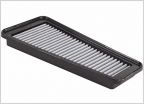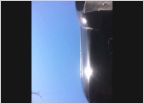-
Welcome to Tacoma World!
You are currently viewing as a guest! To get full-access, you need to register for a FREE account.
As a registered member, you’ll be able to:- Participate in all Tacoma discussion topics
- Communicate privately with other Tacoma owners from around the world
- Post your own photos in our Members Gallery
- Access all special features of the site
Installed Doug Thorley headers and a flowmaster exhaust. now runs like shit
Discussion in 'Performance and Tuning' started by 97yota4wd, Jun 24, 2011.
Page 2 of 2
Page 2 of 2


 Afe pro dry s
Afe pro dry s Doug Thorley 2.7 Headers
Doug Thorley 2.7 Headers RatioTek transmission upgrade how to
RatioTek transmission upgrade how to Popular Magnaflow muffler for Tacoma's?
Popular Magnaflow muffler for Tacoma's? Forced Induction Exhaust Setups & Discussion
Forced Induction Exhaust Setups & Discussion Replacing steering wheel leather
Replacing steering wheel leather



































































